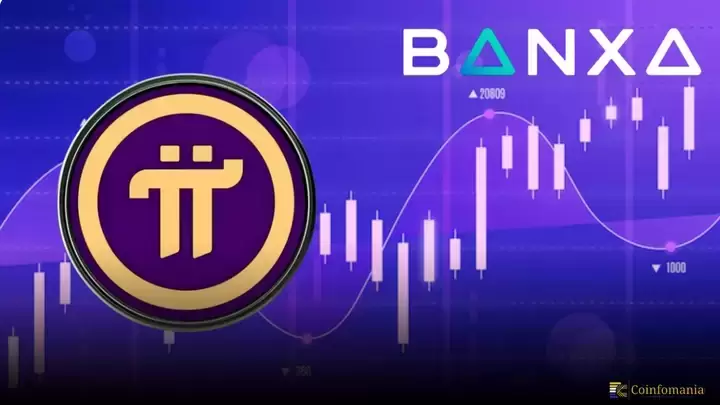 |
|
 |
|
 |
|
 |
|
 |
|
 |
|
 |
|
 |
|
 |
|
 |
|
 |
|
 |
|
 |
|
 |
|
 |
|
Cryptocurrency News Articles
Why is the fiat currency-led, debt-driven global financial system teetering on the edge of collapse
May 04, 2025 at 03:00 am
When confronted with crises – such as budget deficits, pandemics, wars, bank bailouts or market crashes – politicians and central banks instinctively print more fiat currency, flooding the system.

The global financial system, built on fiat currency and fueled by debt, is teetering on the edge of collapse. When confronted with crises – such as budget deficits, pandemics, wars, bank bailouts or market crashes – politicians and central banks instinctively react by printing more fiat currency, which is government-issued ‘money’ that has no intrinsic value and is not backed by a physical commodity.
This flouting of natural economic laws pushes the fragile system closer to collapse.
The current system, propped up by debt and delusion, is unravelling. Fiat currencies are in terminal decline, while gold and Bitcoin are emerging as the ultimate truth-tellers in a world built on financial lies.
A historical parallel underscores fiat currency’s vulnerability. During Japan’s invasion of China in the 1930s and 1940s, the Japanese issued ‘military yen’ to control the occupied economy. This fiat currency, backed only by military authority, was printed excessively to fund operations.
When Japan withdrew after World War II, the ‘military yen’ became worthless – a stark reminder of fiat’s fragility when trust and authority vanish.
Global debt has soared past $300 trillion, inflation remains sticky despite official reassurances, and gold – the eternal truth-teller – has breached $3,500 per ounce, reflecting deepening distrust in fiat currencies and the central banks that continue to print them.
The People’s Bank of China, Central Bank of Russia, Reserve Bank of India, Central Bank of Turkey and the National Bank of Poland, to name just the five major ones, are massively accumulating gold while simultaneously trying to downplay Bitcoin, a decentralised alternative that they fear.
Their fear of Bitcoin stems from its fixed supply of 21 million coins and surging hash rate, which now exceeds 700 exahashes per second. This poses a direct challenge to fiat currency’s centralised control.
Unlike fiat, Bitcoin's value isn't dictated by any single authority; it's secured by a decentralised, global network of miners and remains immune to monetary debasement.
This is why politicians and central bankers dread Bitcoin – because its decentralised ledger, maintained by miners around the world, cannot be easily manipulated like a fiat balance sheet.
And because printing more fiat to dilute Bitcoin's scarcity would be futile. Miners continue to add computing power, rendering the network virtually impregnable.
Yet, despite their fear, Bitcoin's ascent continues. From 2015 to 2025, Bitcoin has recorded a CAGR of approximately 70 per cent, rendering it one of the fastest-growing asset classes in history. Over 80 corporate entities now hold Bitcoin in their treasuries, and more are expected to follow suit as they seek to navigate the turbulent macroeconomic landscape and safeguard their wealth.
Moreover, nation-states are increasingly turning to Bitcoin. China, Singapore and Switzerland are actively exploring the cryptocurrency space and engaging with industry leaders. El Salvador famously adopted Bitcoin as legal tender in 2021, paving the way for other countries to follow suit. Bhutan, Russia and the UAE are among the nations that have made significant moves in recent years to integrate Bitcoin into their economic frameworks.
The World Bank and the IMF may not exist in their current form for long. Politicians may cling to their printing presses, but the market is sending an urgent message that they cannot ignore. The system's reset is all but guaranteed.
Gold is revealing the truth about ‘real value’. Bitcoin’s surging hash rate is a testament to its resilience and the growing threat it poses to fiat currencies. The collapse of the current monetary system isn't a question of if, but when.
Those who prepare for a decentralised future with open-minded optimism and willingness to learn will survive and thrive. But for those who choose to ignore the signs of the times and cling to the status quo, the consequences could be severe.
Disclaimer:info@kdj.com
The information provided is not trading advice. kdj.com does not assume any responsibility for any investments made based on the information provided in this article. Cryptocurrencies are highly volatile and it is highly recommended that you invest with caution after thorough research!
If you believe that the content used on this website infringes your copyright, please contact us immediately (info@kdj.com) and we will delete it promptly.
-

-

-

-

-

-

-

-

-

- It’s Been Another Eventful Week in Cryptocurrency, with Notable News and Developments Impacting Bitcoin (BTC) and Decentralized Finance (DeFi)
- May 04, 2025 at 04:35 pm
- The crypto market is always in motion, with price changes, whale activity, evolving regulations, and the growth of Web3. Here’s a concise recap of the key happenings


























































